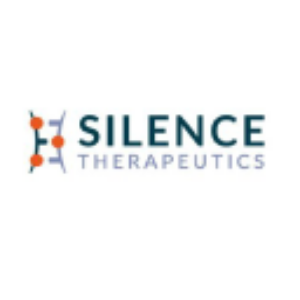Silence Therapeutics Presents Late-Breaking Phase 2 Zerlasiran Data at 2024 American Heart Association (AHA) Annual Meeting
New zerlasiran data show significant time-averaged Lp(a) reductions with effects persisting 60 weeks following the first dose
Represents first study to report time-averaged Lp(a) results to further evaluate potential clinical benefits
Data simultaneously published in the Journal of the American Medical Association
Results presented today showed that zerlasiran (300 mg every 16 weeks, 300 mg every 24 weeks or 450 mg every 24 weeks) produced greater than
“These data provide additional information to select the best dose and dosing interval for future zerlasiran Phase 3 trials,” said Steven E. Nissen, MD, Chief Academic Officer of the Heart, Vascular and Thoracic Institute at Cleveland Clinic and the study’s lead author. “Elevated Lp(a) impacts at least
“Additional results from the ALPACAR-360 study continue to support the competitive profile of zerlasiran on key clinical endpoints assessing time-averaged reduction, maximum effect and tolerability,” said Curtis Rambaran, MD, Chief Medical Officer at Silence. “The Phase 2 data show zerlasiran has the potential to provide long term reductions in Lp(a) with infrequent dosing. We look forward to progressing zerlasiran into Phase 3 as a potentially promising new treatment for patients with high Lp(a).”
About Lp(a)
Lp(a) is genetically determined1-5 and a presumed independent risk factor for cardiovascular disease (CVD). Although an agreed-upon threshold for high Lp(a) is not firmly established, approximately
About ALPACAR-360
The ALPACAR-360 clinical program was designed to evaluate Silence’s investigational zerlasiran in patients with atherosclerotic cardiovascular disease (ASCVD) and high Lp(a) levels to reduce the risk of cardiovascular events. The ALPACAR-360 trial was a multicenter, randomized, double-blind, placebo-controlled dose-finding Phase 2 study in 178 patients with ASCVD and Lp(a) ≥125 nmol/L. Baseline Lp(a) concentration was 213 nmol/L. Patients were randomly assigned to one of three active subcutaneous doses of zerlasiran (300 mg Q16 weeks, 300 mg Q24 weeks, 450 mg Q24 weeks) or placebo. The primary endpoint was time-averaged change in Lp(a) from baseline to 36 weeks. Secondary endpoints included time-averaged changes in LDL-C as well as time-averaged Lp(a) to 48 weeks (end of treatment period) and 60 weeks (end of study).
About Silence Therapeutics
Silence Therapeutics is a global clinical stage biotechnology company committed to transforming people’s lives by silencing diseases through precision engineered medicines created with proprietary siRNA (short interfering RNA) technology. Silence leverages its mRNAi GOLD™ platform to create innovative siRNAs designed to precisely target and silence disease associated genes in the liver, which represents a substantial opportunity. Silence focuses on areas of high unmet medical need with programs advancing in cardiovascular disease, hematology and rare diseases. Silence also maintains research and development collaborations with AstraZeneca and Hansoh Pharma, among others. For more information, please visit https://www.silence-therapeutics.com/.
Forward-Looking Statements
This press release contains “forward-looking statements” within the meaning of the safe harbor provisions of the Private Securities Litigation Reform Act of 1995. These statements may be identified by words such as “aims,” “anticipates,” “believes,” “could,” “estimates,” “expects,” “forecasts,” “goal,” “intends,” “may,” “plans,” “possible,” “potential,” “seeks,” “will” and variations of these words or similar expressions that are intended to identify forward-looking statements, although not all forward-looking statements contain these words. All statements in this press release, other than statements of historical facts, are forward-looking statements. Forward-looking statements in this press release include, but are not limited to, statements regarding: the Company’s clinical development plans of zerlasiran including selection of the dose and dosing interval and the Company’s timing, plans and potential to move into Phase 3 registrational trial; the Company’s ability to create gene-silencing approaches to help patients with ASCVD and high Lp(a) levels to reduce the risk of cardiovascular events; and the potential clinical benefits and efficacy and safety of zerlasiran. Any forward-looking statements are based on management’s current expectations and beliefs of future events and are subject to a number of risks and uncertainties that could cause actual events or results to differ materially and adversely from those set forth in or implied by such forward-looking statements, many of which are beyond the Company’s control. These risks and uncertainties include, but are not limited to: the impact of worsening macroeconomic conditions, including the conflict in
1 Wilson DP, et al. Clin Lipidol. 2019;13(3):374-92.
2 Reyes-Soffer G, et al. Arterioscler Thromb Vasc Biol. 2022;42(1):e48-e60.
3 Kronenberg F, et al. Eur Heart J. 2022;43(39):3925-3946.
4 Tsimikas S, Stroes ESG. Atherosclerosis. 2020;300:1-9.
5 Tsimikas S, et al. J Am Coll Cardiol. 2018;71(2):177–192.
View source version on businesswire.com: https://www.businesswire.com/news/home/20241118316596/en/
Inquiries:
Silence Therapeutics plc
Gem Hopkins, VP, Head of IR & Corporate Communications
+1 (646) 637-3208
ir@silence-therapeutics.com
Media Relations
MKC Strategies
Mary
+1 (516) 606-6545
mconway@mkcstrategies.com
Source: Silence Therapeutics plc







